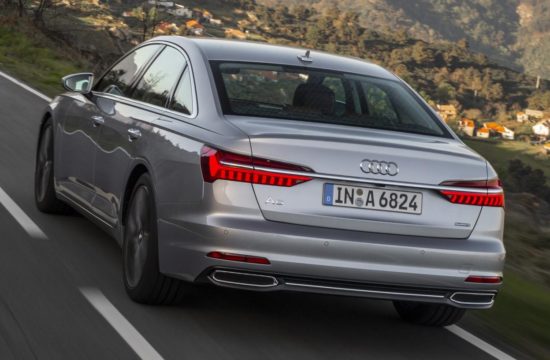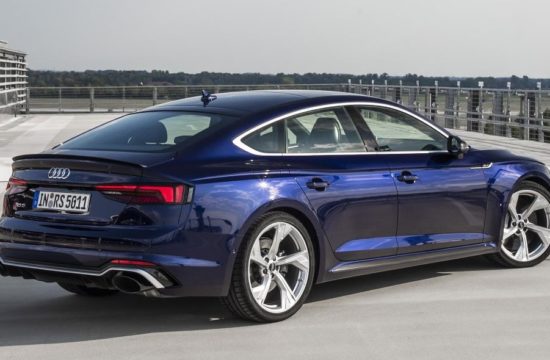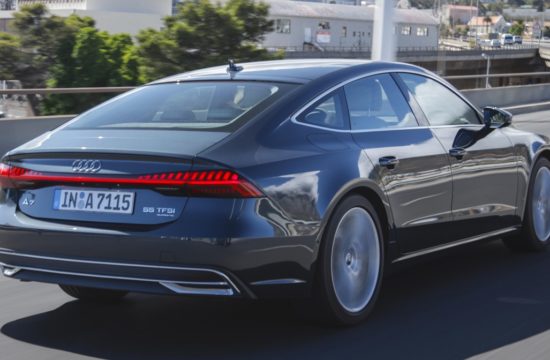Occasionally, Italian car makers cheer up their fans by releasing a bunch of new photos of a car they’ve already released, and that’s quit fun. But when it comes to Germans, they come up with this sort of stuff! A detailed video about how precise is German Engineering! Frankly we found it really boring but you check it out for yourself. And if you liked it, sure you’ll love to read tons of words about it after the jump!
Press Release
Value – raw materials, materials and “look and feel”
AUDI AG
Sylvia Droll, Head of Total Vehicle Materials and Corrosion Engineering
Quality begins with the materials – with their selection, processing and chemistry. Audi sets extremely high standards here and is the driving force of continuous progress.
The company’s quality assurance organization includes an in-house laboratory that employs a whole slew of high-tech devices for extremely detailed studies of materials. Audi’s two computed tomography machines, for example, can scan entire cylinder blocks, and with their extreme magnification of up to 500,000 times, scanning electron microscopes assist in the analysis of fracture sites.
The spectrum of materials is extremely diverse, ranging from metallic materials to rubber, plastics, wood and leather to innovative, dirt-repellent textile trim in the interior. And time and time again, employees turn to their subjective senses to supplement the rigorously scientific analysis. The members of the “Nose Team,” for example, sniff out objectionable odors on board the vehicles and eliminate them.
In the materials sector, Quality Assurance monitors many components from the first step in their development to their everyday use by the customer in production vehicles. They collaborate closely with Technical Development, Production and even the Motorsport Department: Engine and chassis components of the Audi racing cars are also regularly examined in the lab.
Another task area within the material sector are the subjects of operational safety and corrosion, which pertain to the lasting durability of the components and their corrosion resistance. The bar is set high here, as well. Audi uses much more stringent test criteria for alloy wheels than its competitors. And the INKA test (Ingolstadt Corrosion and Aging Test), in which the entire lifetime of an automobile is simulated within five months, has long since become something of a benchmark throughout the entire automobile industry.
Soft and supple – the leather upholstery
AUDI AG
Claudia Lischke, Materials Engineering Interior/Equipment
Leather is a natural material. The unique exterior, the special haptics, the very unique smell – each piece of leather has very sensual properties. Audi handles this emotional material with kid gloves so that it can achieve its uncompromising quality objectives here as well.
The leather Audi uses comes from the natural cycle of agricultural animal husbandry. Every animal is different; every hide is unique. Audi only uses leather from male cows, which have larger and more homogenous hides than females. A large portion of the leather comes from southern Germany – the pastures there are almost entirely devoid of barbed wire fences on which the animals could injure themselves.
A hide has an area of roughly four to five and a half square meters, which the leather experts divide into three quality zones. The best piece is the back (croupon) – the grain is particularly even here and cracks or scars due to injuries are rare. The leather from the core of the back is used in all areas of a car seat where fine appearance and high robustness are most important – on the headrest, in the shoulder area, in the buttocks area and on the side bolsters and seatbacks on the entry side. The leather from the directly adjacent regions of the back are used in all other areas of the seat. Audi does not use the outermost region of the hide.
Tanning of the leather – a process comprising multiple steps – is performed without the use of chromium salts. In a pioneering move for the automobile industry, Audi stopped using these chemicals 15 years ago. They are still used today for shoe and garment leather.
Audi offers its customers an extremely wide selection of leather upholstery for all models. The experts from Quality Assurance divide their “leather pyramid” into three levels. It begins with the basic leather, which is embossed and finished (coated) on machines. The coating covers the hide structures and seals the pores, which makes the seat very durable. Less finishing is involved on the second level of the pyramid; the leather is more natural, breathes more and is softer – to paraphrase: more comfortable.
At the very top is pure aniline leather. There is no machine embossing or coating involved. The top grade of leather shows its natural surface and grain, thus it also requires a greater level of care. Unlike coated leather, it shows authentic characteristics of an animal hide in some areas, such as tiny healed wounds, light rough patches or mosquito bites. As a visible expression of natural processing, these underscore the authentic character of the material.
Regardless of the type of leather, Audi checks all grades of leather in its own laboratory. 45 tests are performed just to determine the durability of the leather. Mounted in automatic fixtures, the leather specimens have to show that they expand evenly, where they begin to tear, when they begin to develop wrinkles and how resistant they are to abrasion and fire.
How they react to exposure to extreme sunlight is just as important as the determination of water vapor permeability or the odor and emission tests.
Besides the classic types of leather, Audi also offers seats covered in a combination of leather and Alcantara in many models. The natural material is applied to the side bolsters and seat backs; the microfiber on the center areas. Audi is also constantly developing new leather grades, particular with respect to breathability, softness and natural appearance.
Strict standards apply not only for the selection of the leather, but also for its application and stitching. Due to their round and concave shapes, a great deal of effort is required to cover the seats – especially the sport seats – without wrinkling, but that is precisely what Audi quality demands. The seams on all seats and trim elements are exactly straight, even and parallel. This can be attributed in part to the special needles used in the sewing machine. The so-called cutting needles minimize the sawtooth effect in the cap seam region that would otherwise occur when the leather is drawn into the needle mark.
Precious material – the wood veneers
AUDI AG
Hermann Wiegel, Head of Non-Metallic Materials
Wood veneers create an atmosphere in the interior; they convey an impression of elegance and cultivations. Wood is a precious natural material – and a demanding one. Audi handles it with particular care.
Audi’s purchasing agents apply strict standards to the raw material. Specialty companies manufacture veneers by machine-peeling thin sheets only 0.5 to 0.6 mm thick from the trunks of trees, from the roots or from outgrowths from the trunk called burls. Because the structure of the wood is constantly changing, each sheet of veneer has its own grain – a “flat” or “living” structure as the experts say. The “clouds” and “eyes” are always different.
These differences are more or less pronounced depending on the type and lightness of the wood. Dark birds-eye maple, for example, has a relatively homogenous appearance, whereas light poplar is particularly variable. Amber-colored vavona, taken from the burls of the California redwood, exhibits a wide range of structures and brilliant, shimmering colors that gives an intense sense of depth. Audi offers its customers a broad selection of inlays, with custom grades such as Fine grain maple copper or Poplar saffron available from the Audi exclusive and Audi S line ranges for various models.
The veneer sheets must satisfy exacting requirements if they are make it past the watchful eyes of Audi Quality Assurance. A veneer trim set for a car generally comes from a single burl or single sheet of veneer. The individual parts are similar. Audi is particularly strict when it comes to obvious differences in areas such as the center console and the ashtray cover fitted there. The veneers must be free of flaws.
Processing of the veneer sheets is a painstaking process. The specialists bond and press a precious veneer with up to four substrate layers, taking into consideration the alignment of the grain in the layers so that they can later achieve perfect dimensional accuracy. Machine pressing, in which the thin package comes in the desired form, also requires a fine sense for the proper temperatures and cooling times. After pressing, the wood skin thus produced is back-injected with plastic.
The next step is bleaching, which is required because the base colors of the wood are different. The final shade is provided by the stain, which is applied thereafter. Wood with a “flat” optical structure is used for the piano finish trim that Audi offers for some models. The wood is painted black and covered with up to ten successive coats of clearcoat.
Most veneers also contain a sealing coating of transparent plastic (polyurethane/PU). It protects against scratches, provides a deep luster and does not yellow even when exposed to intense sunshine. The PU coating is not used with open-pored veneers such as dark ash. Instead the natural surface is retained, which has a slightly structured feel when you run a fingertip over it.
Only after all of these steps have been completed is the part machined. All parts have complex geometries – the door inlays, for example, are not plane but raised, and the large panel on the center console has numerous edges and radii due to the cutouts for the ashtray, shift lever and, if installed, the start-stop button.
Machine cutting requires a high degree of precision, and Audi also requires subsequent manual reworking of the cut pieces. A sanding block is used to sand (“break”) the edges of the veneer very slightly – it takes years of experience to sand down just the right amount. The next step – polishing with soft cloths – is also performed by hand in many areas. The special coating for the edges, which prevents moisture from penetrating into the wood, is also applied manually.
Audi focuses on maximum precision at each step, even when the finished wooden trim elements are bonded with thin chrome frames as is the case with some variants. The permissible tolerances, including those for assembly at the plant, are generally only one to two millimeters. These are essential due to the various rates of thermal expansion of the components. Even at extreme temperatures – and in direct sunshine the interior of a car can reach as much as 70 degrees Celsius – the veneer must not rub against the frame.
Audi Quality Assurance maintains its own testing laboratory for the study of wood veneers, where issues such as fogging (evaporation) or fading are investigated. Specialists carefully study the structure of the woods; other topics include weatherability, geometrical stability and resistance to abrasion and scratching.
Audi is also constantly developing innovations in interior materials. The current trend is toward lighter colors, and thus also toward lighter woods. The “Sportback concept” prototype presented at the Detroit Auto Show early this year featured light veneers into which lateral strips of dark wood were embedded. This solution is very time-consuming and requires a novel process for peeling the veneers but produces a one-of-a-kind atmosphere in the interior.








